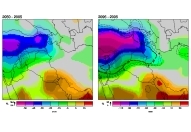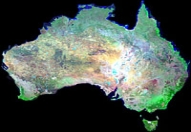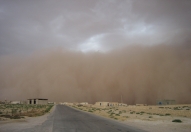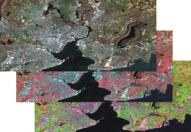Prof. Jason P. Evans
Climate Change Research Centre
University of New South Wales









Natural hazards in Australia: heatwaves.
Perkins, S.E, C.J. White, L.V. Alexander, D. Argüeso, G. Boschat, T. Cowan, J.P. Evans, M. Ekström, E.C.J. Oliver, A. Phatak and A. Purich
MODSIM2015, 21st International Congress on Modelling and Simulation. Modelling and Simulation Society of Australia and New Zealand, Gold Coast, Australia, 29 November – 4 December 2015. Abstract
Heatwaves have disastrous impacts on many different systems, including human health,
infrastructure, and natural ecosystems. Australia is no stranger to these impacts, with over 370 fatalities
attributed to the 2009 Victorian heatwave, and 3500 flying foxes killed when temperatures soared to 42oC
over New South Wales in 2002. Marine heatwaves (prolonged periods of anomalously warm oceans) also
have significant impacts. The infamous “Ningaloo-Niño” in 2011 led to a “tropicalization” of fish
communities and severely damaged the distribution of temperate seaweeds and fish, which may never fully
recover.
Recent research efforts have concentrated on furthering our understanding of both terrestrial and marine
heatwaves. However, a comprehensive understanding of these events also requires a comprehensive
understanding of the underpinning physical mechanisms and their interactions. This presentation reviews the
current state of the scientific knowledge of marine and terrestrial heatwaves, with particular emphasis for the
Australian region. Based on this knowledge, recommendations are given for the concentration of future
research, both short and long term, and how the Australian science community, as well as the global science
community, will benefit from this. The supporting paper for this presentation is part of the OZewex special
edition on Australian hazards.
Specifically, the review finds that while unified metrics for measuring terrestrial heatwaves is yet to be
determined, increases in intensity, frequency and duration are detectable since at least the 1950s. Moreover,
projections from the Coupled Model Intercomparison Project phase 5 (CMIP5) global climate model
ensemble and the dynamically-downscaled NSW/ACT Regional Climate Modelling (NARCliM) simulations
project larger increases of all heatwave characteristics in the future. While there are spatial similarities
between the two types of simulations, future changes in heatwave projections by NARCliM are generally of
smaller magnitude. A similarly comprehensive analysis on future projections of marine heatwaves is yet to be
constructed.
Moreover, an extensive research effort has been undertaken in understanding how the land surface and
atmosphere couples together in priming local terrestrial heatwave conditions, as well as their interactions and
feedbacks during particular events. For a similar analysis to be undertaken over Australia, various
atmospheric modeling simulations at high spatial resolution are imperative. Such experiments may be run, for
example, with a range of prescribed soil moisture levels to investigate how dry it must be for a heatwave to
occur, persist and intensify. Another recommendation of this review includes the employment of coupled
climate model simulations that are run both with and without greenhouse gas forcings in order to ascertain
the human signal behind observed trends in Australian terrestrial heatwaves. This method, called formal
optimal fingerprinting, has been successfully applied regional trends in other extremes, and can be readily
applied to numerous models part of the CMIP5 archive.
|
|